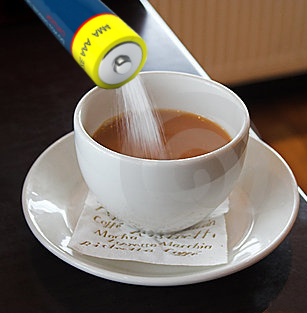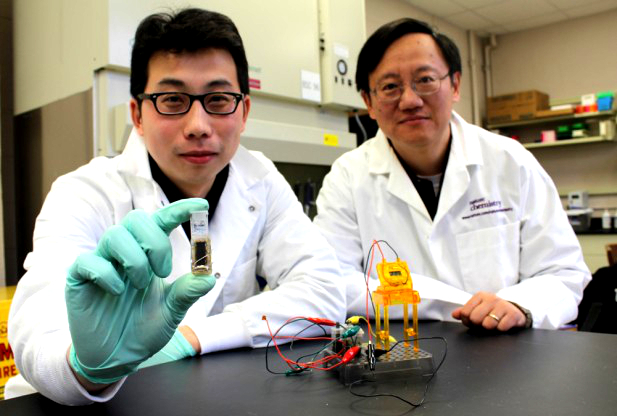Sweet new battery turns enzymes to electricity
 Batteries made from a futuristic mix of sugars and other enzymes could power our devices in just a few years, with a new standard set by researchers in the US.
Batteries made from a futuristic mix of sugars and other enzymes could power our devices in just a few years, with a new standard set by researchers in the US.
A research team has developed a battery that runs on sugar, now the most powerful of its kind.
The breakthrough is the result of work by Y.H. Percival Zhang, an associate professor of biological systems engineering, and his team of Virginia Tech researchers.
“Sugar is a perfect energy storage compound in nature,” Zhang said.
“So it's only logical that we try to harness this natural power in an environmentally friendly way to produce a battery.”
The battery is considerably safer too; the sugar-fuel solution is neither explosive nor flammable and has a high energy storage density.
The enzymes and fuels used to build the device are biodegradable. The battery is also rechargeable, as new sugars can be added much like filling a printer cartridge with ink.
The battery in the latest in a string of exciting successes by Prof Zhang and associates, who have been using a series of enzymes mixed in combinations not found in nature.
The enzyme concoctions have been used to create edible starch from non-food plants and extract hydrogen for fuel in a safe and non-destructive way.
The sugar battery is constructed from a non-natural synthetic enzymatic pathway that strips all charge potentials from sugar to generate electricity in an enzymatic fuel cell.
Low-cost biocatalyst enzymes are then used as catalyst. This is a big improvement over platinum, which is typically used as a catalyst in conventional batteries despite its high cost.
The sugar cell combines fuel - in this case, maltodextrin, a polysaccharide made from partial hydrolysis of starch - with air to generate electricity and water as the main byproducts.
“We are releasing all electron charges stored in the sugar solution slowly step-by-step by using an enzyme cascade,” Zhang said.
More information is available from the full report, accessible here.








 Print
Print